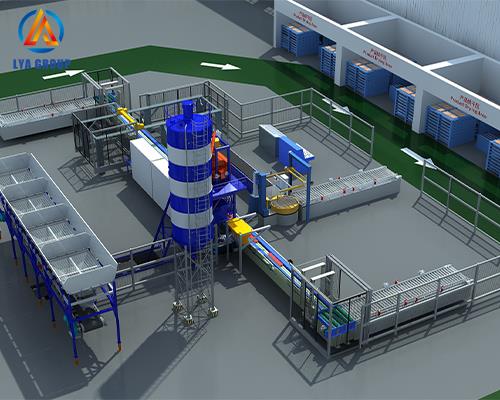Auto feeding machine
News 2024年3月14日 100

An auto feeding machine, also known as an automatic feeding system or feeder, is a specialized piece of equipment used to automate the feeding of materials or components into a production line or machine. It is commonly used in manufacturing, assembly, and packaging processes to improve efficiency, reduce manual labor, and ensure consistent feeding of materials. The specific design and capabilities of an auto feeding machine can vary depending on the type of materials being handled and the application, but here are some general features and functions:
Material Handling: An auto feeding machine is designed to handle and transport materials or components from a supply source to the designated location in the production line or machine. It may employ various mechanisms such as conveyor belts, robotic arms, pick-and-place systems, or pneumatic systems to move the materials.
Automatic Feeding: The machine is equipped with mechanisms to automatically feed the materials into the production line or machine. This can involve precise positioning, orientation, and timing to ensure accurate and consistent feeding. The feeding mechanism can be customized based on the specific requirements of the materials and the production process.
Control and Automation: Auto feeding machines are typically equipped with automation and control systems to manage the feeding process. They may utilize programmable logic controllers (PLCs) or computerized systems to control the movement of the machine, the feeding sequence, and other parameters. The automation system ensures reliable and efficient feeding while allowing for customization and flexibility.
Sorting and Orientation: In some cases, auto feeding machines incorporate sorting or orientation capabilities. They can detect and adjust the position, orientation, or alignment of the materials before feeding them into the production line or machine. This is particularly useful when dealing with irregularly shaped or oriented materials.
Capacity and Speed: The capacity and speed of an auto feeding machine can vary depending on the specific application and requirements. Some machines are designed for high-speed production lines that require rapid and continuous feeding, while others are suitable for slower-paced processes. The capacity can also be customized based on the volume and size of the materials being handled.
Integration with Production Line: Auto feeding machines are typically integrated into the production line or machine they are feeding. They are synchronized with the overall workflow to ensure seamless material flow and avoid bottlenecks. Integration can involve sensors, actuators, or communication systems to coordinate the feeding process with other operations.
Safety Features: Auto feeding machines are often equipped with safety features to protect operators and prevent accidents. These can include sensors, emergency stop buttons, safety barriers, or light curtains to ensure safe operation during material feeding.
Auto feeding machines offer multiple benefits in terms of productivity, efficiency, and labor savings. By automating the feeding process, they can reduce manual labor, minimize errors, and increase throughput. These machines are widely used in industries such as manufacturing, assembly, packaging, and material handling, where efficient and reliable material feeding is essential for smooth operations.